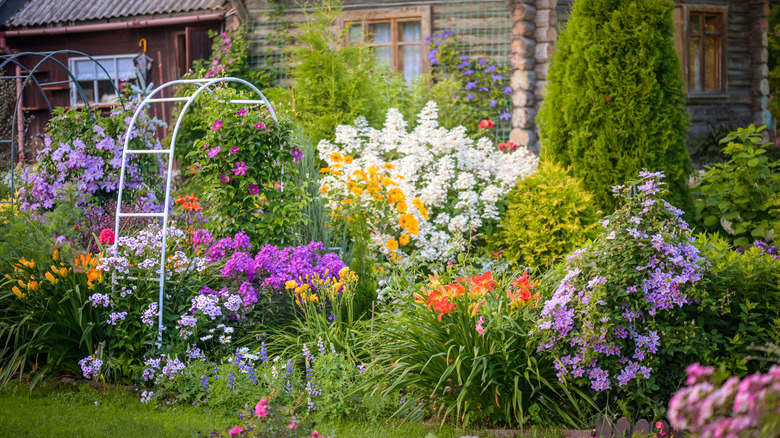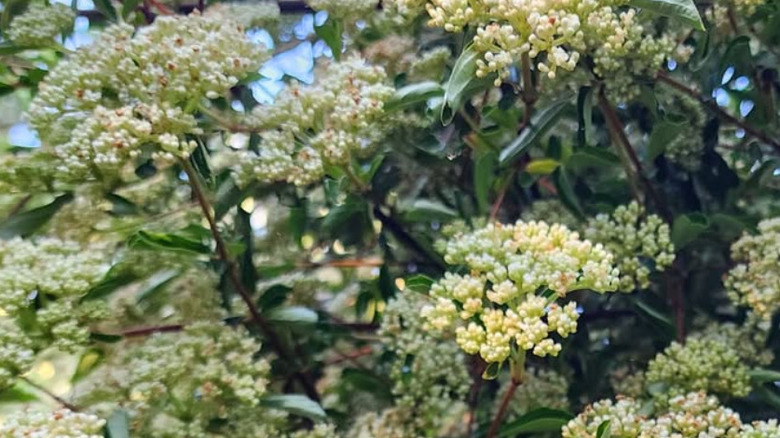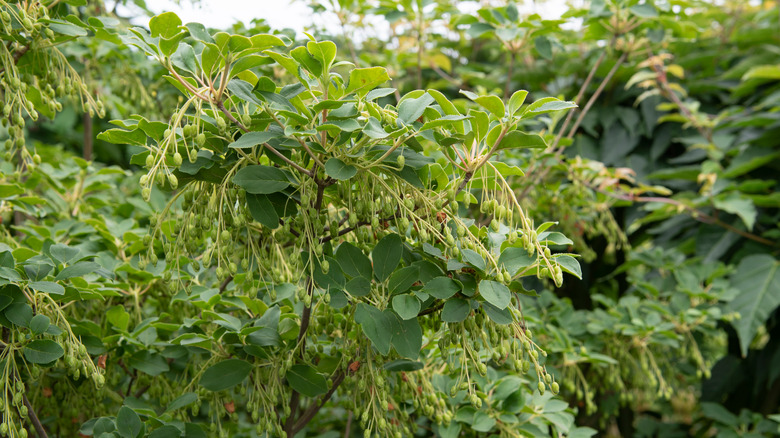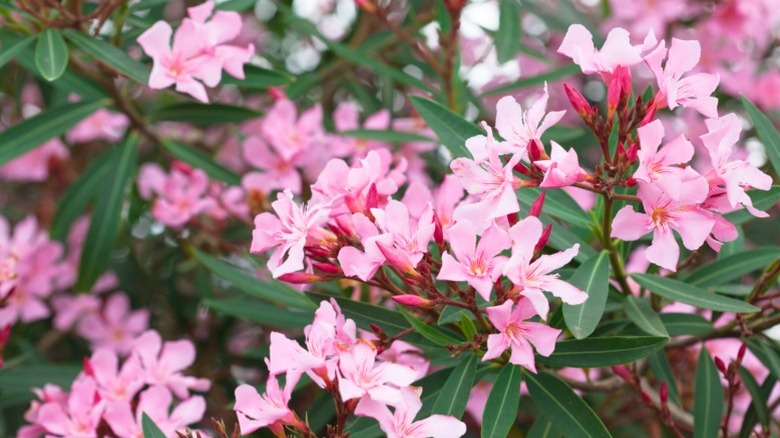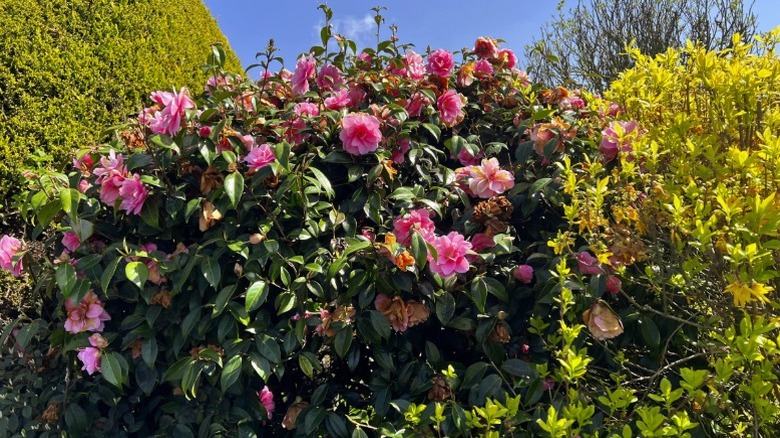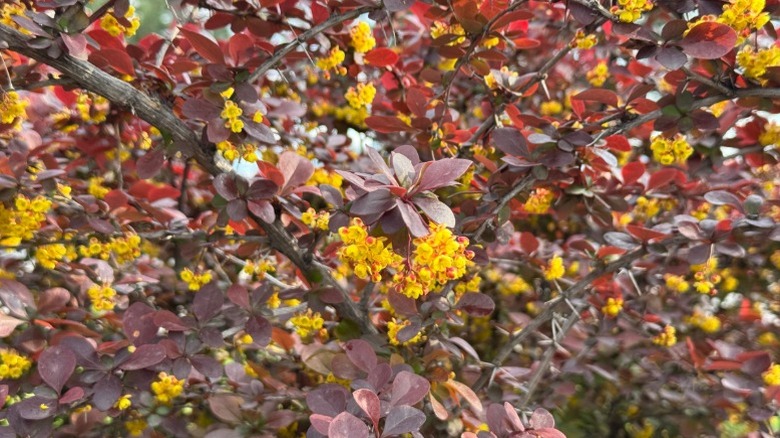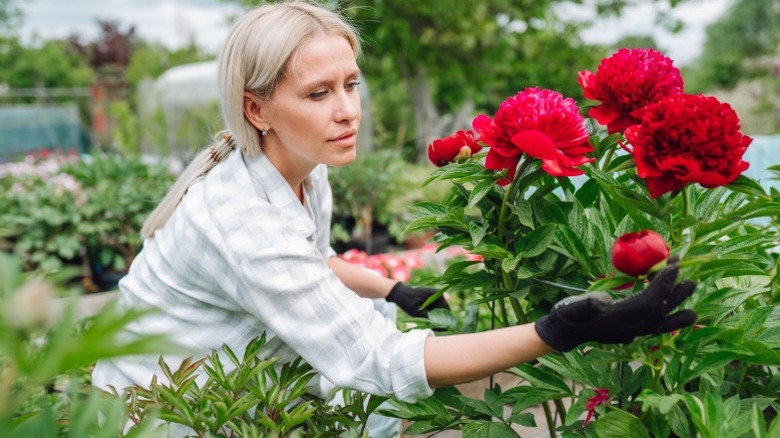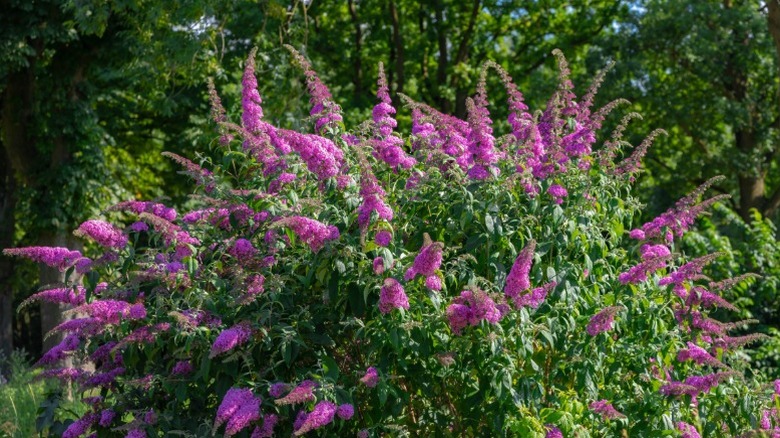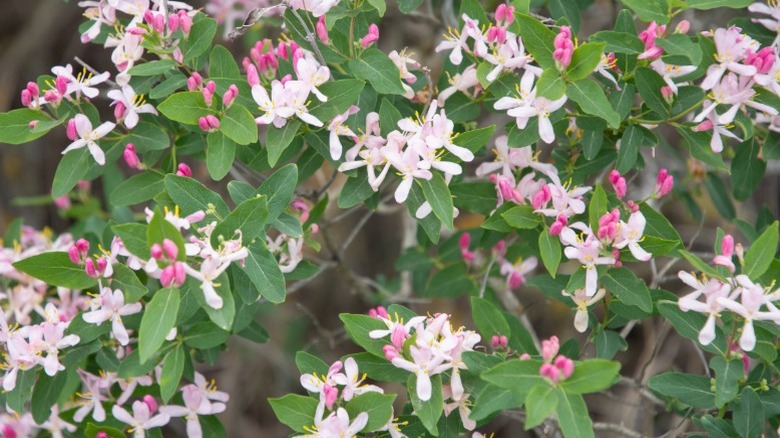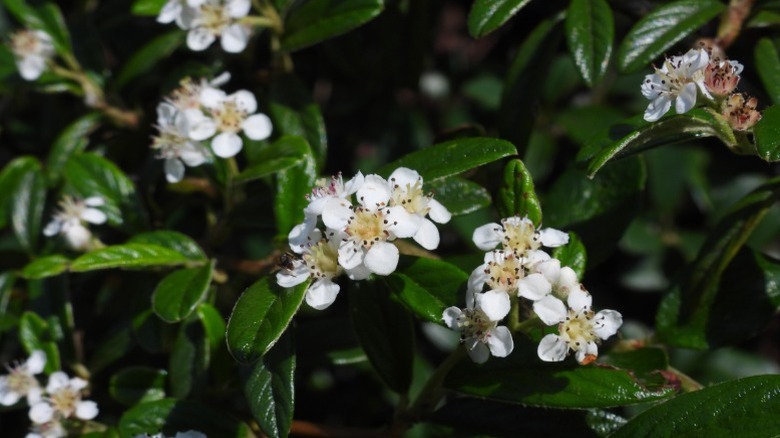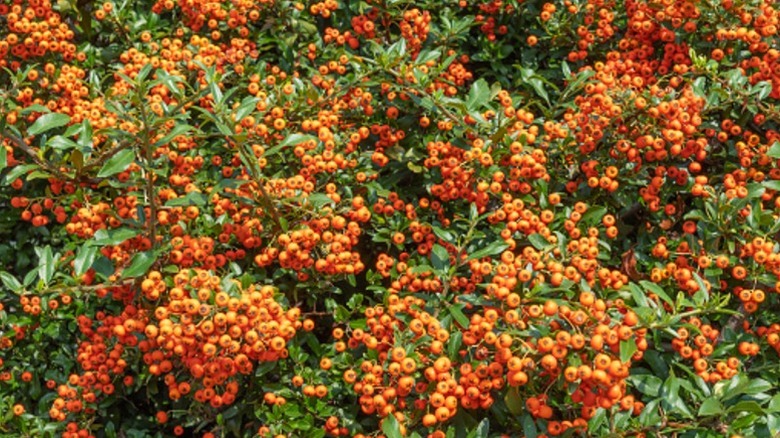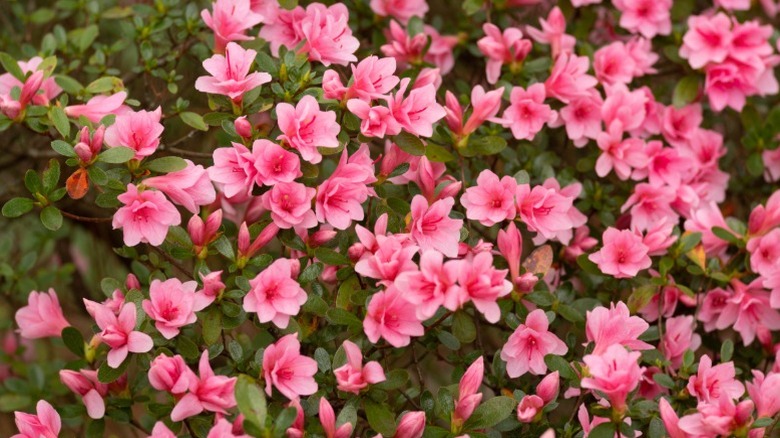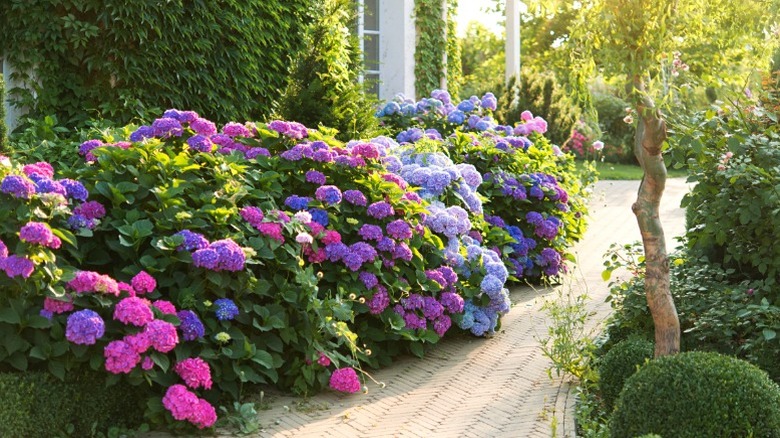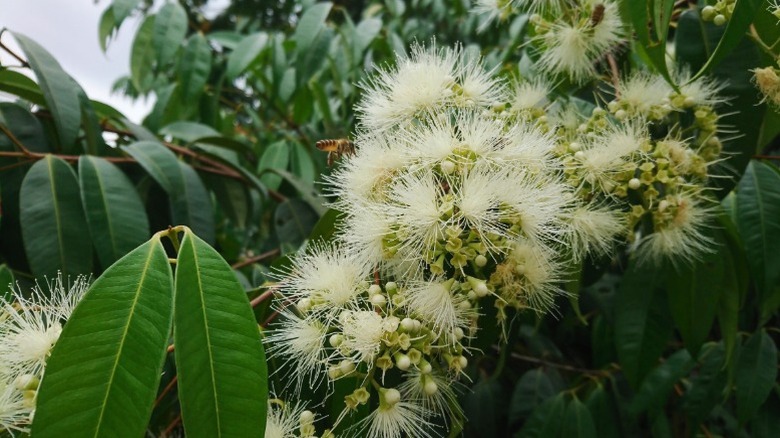14 Flowering Shrubs That Look Beautiful But Aren't Worth Growing In Your Yard
In a perfect world, the only aspect you'd need to worry about when planning a garden is the overall beauty of the plants. Unfortunately, even the prettiest plants can have hidden downsides. Sometimes, a lovely flowering shrub is actually highly invasive or attracts unwanted pests to your yard. Many people enjoy gardening in their yard as a relaxing pastime. If you're one of them, you might not want to sign up for a lot of annoyance or extra work, whether it's due to high-maintenance plants or dealing with unwanted side effects.
Many gardeners enjoy using flowering shrubs to bring drama to a yard or to add privacy with dense foliage and blooms. But if you're not careful, you might find that your beautiful flowering shrub is not all you hoped it would be. Proper research and planning are the best ways to figure out what species will work best in your yard. Whether you don't want to smell the nasty scent of stinking viburnum or you would rather not deal with the potential threat of poisonous oleander leaves, several shrubs are best to stay away from.
Don't add invasive burning bush to your yard's edge
Homeowners prize burning bush (Euonymus alatus) for its bright crimson leaves in autumn. Despite the stunning look of this flowering shrub, you should not forget that it is highly invasive. First brought to the U.S. in the 1800s, burning bush escapes from yards to outcompete native vegetation. It can grow as tall as 20 feet and is highly adaptable to different soils. Instead of invasive burning bush that can cause environmental harm, select a native flowering shrub like red chokeberry (Aronia arbutifolia) to give your yard some fall color.
Stinking viburnum gives off a terrible smell
Although native to Asia, stinking viburnum (Viburnum foetidum) is not invasive. But, as its common name indicates, this flowering shrub has other reasons to make you think twice. If the leaves of this plant are crushed, they give off a malodorous scent. To get away from the smell of this species but still enjoy the blooms and bright-colored fruit, opt for one of its sweet-smelling cousins. The aptly named sweet viburnum (Viburnum odoratissimum) is lightly fragrant with conical clusters of flowers in springtime.
Avoid planting poisonous maleberry in your yard
Maleberry (Lyonia ligustrina), or lyonia, is native to the eastern U.S., specifically low-lying woods, meadows, and bogs. Despite its native status, maleberry is highly poisonous. Many of the parts can be dangerous, including the flowers, leaves, and sap. Livestock, like cattle and sheep, are most often the unassuming victims of this shrub, but there have been cases of humans being poisoned, so keep it away from areas frequented by children and pets. Although it has pretty, urn-shaped white flowers that arrive in early summer, it might be best to avoid this shrub.
Don't use beautiful but poisonous oleander in your yard
With long, dark leaves and fragrant, showy flowers, plenty of gardeners love oleander (Nerium oleander). This evergreen shrub displays gorgeous, bold blooms in shades ranging from yellow to white to red. However, oleander is an example of an extremely toxic plant with beautiful flowers that are deadly for your beloved pets. All parts of the oleander shrub are dangerous, including the bark, sap, seeds, and flowers. Even if you avoid ingesting it, the sap from this species is a skin irritant. Even burning the plant can release the toxin cardenolide glycosides.
Beautiful camellias might be too high maintenance
Growing the common camellia (Camellia japonica) is fun for some but likely frustrating for others. This showy evergreen shrub features beautiful flowers in white, as well as different shades of pink and red. Despite their long lifespan, it can take a while to properly establish a camellia shrub in your yard due to very slow growth. Many things can lead to poor flowering, including too much sun, too much cold, or too much shade. This picky, high-maintenance plant needs devoted care, including monitoring for common issues, such as root rot, dieback and canker, and camellia petal blight.
Prevent tick infestations and don't grow Japanese barberry
To reduce the number of ticks you have in your yard, you should avoid planting Japanese barberry (Berberis thunbergii). This invasive shrub, native to Japan, is notably present in areas with higher numbers of deer ticks. The bottom line is that Japanese barberry's dense growth provides an optimal place for ticks. This yellow-flowering shrub also exhibits invasive growth, colonizing shady or sunny areas with ease. To avoid encouraging ticks to visit your yard, try planting ninebark (Physocarpus opulifolius). This species features lovely pink-tinged white flowers and has similarly colored foliage to Japanese barberry.
Keep ant-attracting peonies out of your garden
The large, bombastic blooms of the peonies (Paeonia spp.) come with a sometimes unwanted addition: ants. Many gardeners do not mind the attraction that ants feel towards their peony shrubs, as they enjoy the fragrant flowers in their yard. Although the ants are harmless, you might not enjoy having them very close to your home. It's also important to note the toxicity of peonies to dogs, cats, and horses. The plants contain paeonol, which can lead to vomiting and diarrhea.
Avoid butterfly bush, which does not please native pollinators
Unfortunately for many gardeners, the bitter truth about the butterfly bush (Buddleja davidii) is that it is a highly invasive, destructive shrub. A fast-growing, woody species, this shrub, also called summer lilac, has lovely purple, pink, or white flowers. Although it attracts butterflies with its nectar, this plant does not support native caterpillars. It also pushes out native plants better suited to feeding butterflies. Avoid planting this plant in your pollinator garden; instead, choose a native species like milkweed (Asclepias spp.), which supports monarch butterflies and other pollinators.
Stay away from easy-to-grow, hard-to-remove bush honeysuckle
A fast-growing bush with pretty, fragrant flowers that can control erosion seems like a dream come true. But wait before planting invasive bush honeysuckle, including tartarian (Lonicera tatarica), amur (Lonicera maacki), and morrow (Lonicera morrow). Unlike native honeysuckle options, these species overtake areas, preventing native plants from thriving. For example, amur honeysuckle inhibits the growth of plants near it. These invasive shrubs also don't provide adequate food for birds. At the garden center, opt for two popular native bush honeysuckles: northern bush honeysuckle (Diervilla lonicera) and southern bush honeysuckle (Diervilla sessilifolia).
Avoid the double trouble of poisonous, invasive cotoneaster
Not only is the wintergreen cotoneaster (Cotoneaster integrifolius) invasive, it's also poisonous to humans and animals. This dangerous plant, a member of the rose family, has deadly berries that can lead to respiratory problems, weakness, and seizures. Although the tiny, star-shaped, white flowers are beautiful, avoid cultivating this shrub in your yard if you worry about children or pets poking at it. Along with being toxic, wintergreen cotoneaster, which is often used as ground cover, can spread beyond its bounds and crowd out native species.
Keep thorny, poisonous firethorn at bay
Think twice before adding this gorgeous bird magnet to your yard despite its showy little flowers. Firethorn (Pyracantha spp.) includes several species of flowering shrubs known to be poisonous, including scarlet firethorn (Pyracantha coccinea). This flowering shrub also features unfriendly, thorny stems hidden by red-orange fruit. Even if you don't mind a thorny shrub, avoid growing it due to its invasive growth habit. Native to Europe and Asia, scarlet firethorn spreads as birds eat its fruit. Select a species of flowering shrub without thorns but still featuring pretty flowers and bright berries, like yaupon holly (Ilex vomitoria).
Save yourself a headache and don't grow difficult azaleas
Azaleas (Rhododendron) are a lovely group of flowering shrubs, but one species might not be worth the trouble. Southern Indian azalea (Rhododendron indicum) is a small semi-evergreen shrub. With its pretty pinkish-red flowers, arranged in showy funnels, it's easy to see why it's popularly grown as a hedge or border shrub. But the downside of this beloved plant is the time you need to spend caring for it. A high-maintenance species, it's intolerant of wet, heavy soil, which leads to root rot. Spent flowers must be snipped off almost immediately after blooming.
Many species of hydrangea will attract hungry deer
Hydrangeas (Hydrangea spp.) feature prominently in U.S. gardens, serving as popular flowering shrubs with homeowners. Both smooth hydrangea (Hydrangea arborescens) and bigleaf hydrangea (Hydrangea macrophylla) have large, rounded umbrella-shaped clusters of flowers with bold colors. However, in certain areas avoid planting them in your landscaping unless you want to deal with hungry deer. For example, the overwintering buds of bigleaf hydrangea are subject to deer browse, which can ruin flowering for the next year. Choosing to plant them too close to wooded areas without protection puts them at risk of becoming severely damaged.
Keep odors to a minimum and don't plant white stopper
Don't look now, but this beautiful plant could be causing that awful smell in your yard. White stopper (Eugenia axillaris) carries an odor that is described as musky or skunky. White stopper is a member of the myrtle family, and its smell is the result of oils on the leaves. A beautiful native shrub that displays white or creamy yellow flowers with flashy yellow stamens poking out, white stopper also has edible berries. The pungent scent of this evergreen, flowering shrub can be too much for a small, enclosed outdoor space.
